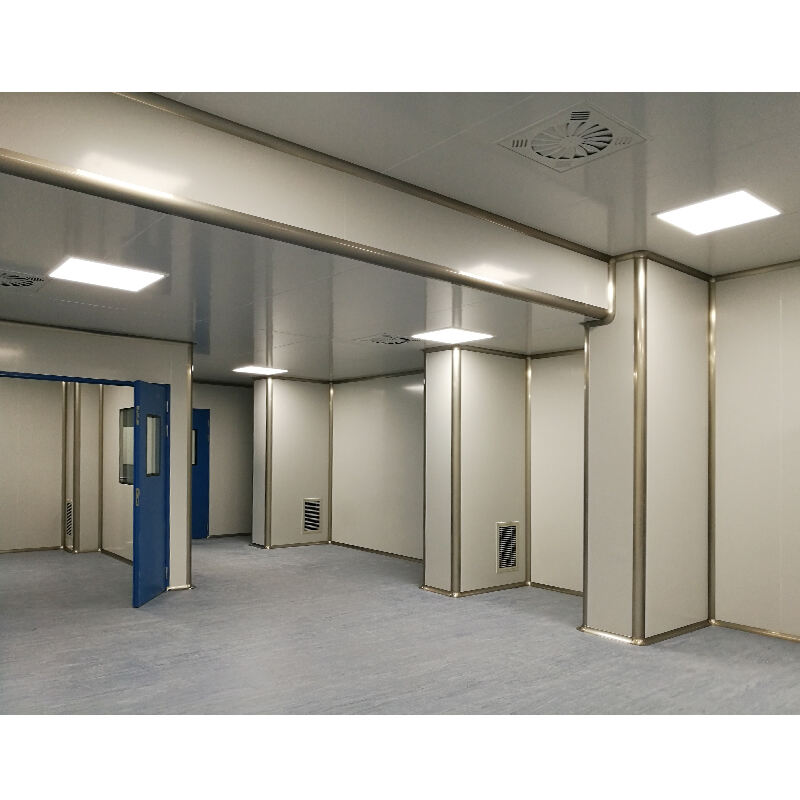The Essential Role of Air Shower Systems in Modern Cleanroom Environments
Air shower systems serve as critical gatekeepers in cleanroom environments, providing a sophisticated barrier between the outside world and the controlled clean space. These specialized chambers use high-velocity air jets to remove particles from personnel and materials before they enter the cleanroom, maintaining the strict cleanliness standards required in industries like pharmaceuticals, semiconductors, and biotechnology. Understanding the key features that enhance air shower efficiency is crucial for facility managers and cleanroom operators who need to maintain optimal contamination control.
Core Components of Advanced Air Shower Systems
High-Performance Air Filtration Technology
At the heart of effective clean room air showers lies advanced filtration technology. Modern systems incorporate HEPA (High-Efficiency Particulate Air) filters that can capture particles as small as 0.3 microns with 99.97% efficiency. Some cutting-edge installations even utilize ULPA (Ultra-Low Penetration Air) filters, pushing filtration capabilities to even higher levels of performance. These filtration systems work continuously to ensure that the air used in the shower process is itself pristinely clean.
The placement and configuration of these filters within the air shower system significantly impact their effectiveness. Top-tier designs position multiple filters strategically to create optimal airflow patterns and ensure comprehensive particle removal. Regular maintenance and monitoring of filter performance help maintain peak efficiency and extend the operational life of the entire system.
Precision-Engineered Nozzle Design
The nozzle configuration in clean room air showers plays a vital role in particle removal efficiency. Advanced nozzle designs focus on creating the optimal air velocity and coverage pattern to dislodge contaminants effectively. Modern systems feature adjustable nozzles that can be fine-tuned to achieve the perfect balance between air pressure and comfort for personnel passing through.
Leading manufacturers incorporate computational fluid dynamics in their nozzle designs to ensure uniform air distribution and minimize dead zones where particles might escape the air streams. The angle and positioning of these nozzles are carefully calculated to create overlapping coverage patterns, ensuring no area goes untreated during the cleaning cycle.
Intelligent Control Systems and Automation
Smart Operating Controls
Modern clean room air showers incorporate sophisticated control systems that optimize performance while minimizing energy consumption. These intelligent systems can adjust operational parameters in real-time based on usage patterns and contamination levels. Advanced sensors monitor air velocity, pressure differentials, and particle counts, automatically adjusting system settings to maintain optimal performance.
The integration of touchscreen interfaces and programmable logic controllers (PLCs) allows for precise control over cycle times, air velocity, and other critical parameters. This level of control ensures consistent performance while providing detailed operational data for compliance documentation and system optimization.
Automated Safety Features
Safety features in contemporary air shower systems go beyond basic interlocking doors. Advanced systems incorporate multiple layers of safety controls, including emergency stop buttons, pressure sensors, and automated fault detection. These features protect both personnel and equipment while ensuring continuous operation within specified parameters.
Modern installations also feature automated maintenance alerts and performance monitoring systems that can predict potential issues before they impact operations. This proactive approach to system management helps maintain consistent performance and reduces unexpected downtime.
Structural Design Elements
Material Selection and Construction
The choice of materials used in clean room air showers significantly impacts their efficiency and longevity. High-grade stainless steel construction offers superior durability and cleanability, while specialized coatings can enhance resistance to cleaning chemicals and reduce particle adherence. The seamless welding techniques used in modern construction eliminate crevices where contaminants might collect.
Advanced designs also incorporate ergonomic considerations, such as properly sized chambers and optimized door placement, to ensure efficient personnel flow while maintaining effective cleaning action. The interior surfaces are carefully finished to prevent particle accumulation and facilitate easy cleaning and maintenance.
Airflow Management Systems
Effective airflow management is crucial for optimal air shower performance. Modern systems utilize advanced computational modeling to design airflow patterns that maximize particle removal efficiency. This includes carefully positioned return air grilles and precisely calculated chamber dimensions that work together to create the most effective cleaning environment.
Leading manufacturers incorporate features such as variable speed fans and adjustable dampers to fine-tune airflow patterns for different applications and user requirements. These systems can maintain consistent performance even under varying conditions, such as changes in facility pressure or environmental factors.
Frequently Asked Questions
How long should an air shower cycle last for optimal efficiency?
The optimal air shower cycle typically ranges from 15 to 30 seconds, depending on specific cleanroom requirements and industry standards. However, advanced systems allow for customizable cycle times based on factors such as particle load, personnel throughput needs, and cleanliness class requirements.
What maintenance is required to maintain air shower efficiency?
Regular maintenance includes filter inspection and replacement, nozzle cleaning, airflow verification, and system calibration. Modern systems should undergo monthly performance checks, with more comprehensive maintenance performed quarterly. HEPA filters typically require replacement annually or when differential pressure readings indicate reduced efficiency.
How can facilities optimize air shower energy consumption?
Energy optimization strategies include implementing motion sensors for automatic activation, utilizing variable frequency drives for fan control, and programming operation schedules based on facility usage patterns. Advanced control systems can also monitor and adjust performance parameters to maintain efficiency while minimizing energy use.

